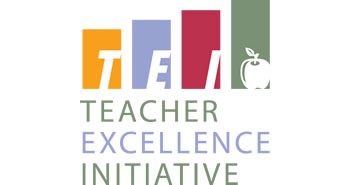What does exemplary teaching look like? What does it sound like? How do students act and respond in a classroom where it’s occurring? And how do administrators become proficient at objectively measuring the characteristics of effective teaching?
Principals, assistant principals and other staff who coach and evaluate teachers are in class themselves this week discussing these and similar topics at the Teacher Excellence Initiative Certification training at W.H. Adamson High School. The weeklong professional development session is aimed at making administrators keenly aware of what they should be looking for when conducting spot observations of teachers. The training is also preparing administrators to become more effective coaches.
Academic Facilitator Felicia Coe, who works with the instructional coaches who support middle and high school teachers in the South Oak Cliff feeder pattern, said the training will be invaluable to their work. “It will help greatly to frame the work that I do with instructional coaches. Having this information will help inform their practice with teachers as they work with teachers on lesson planning, effective delivery of lessons, active engagement, and rigor.”
The sessions brought together principals from each division to study the Teacher Performance Rubric (available at www.dallasisd.org/tei), become knowledgeable about the indicators of the five TEI domains, and to be able to readily identify the characteristics of effective teaching.
Assistant Principal Rodney Cooksey said much of the training reinforced what administrators are already doing, and predicted the increased emphasis on coaching “will help administrators help teachers improve their practice in terms of focused instruction and measurable strategies that will improve student growth.”
Trainers walked participants through the indicators of the four domains of the performance rubric—Planning and Preparation, Instructional Practice, Classroom Culture, and Professionalism and Collaboration, challenging principals to identify the signs of proficiency. These include measuring teachers’ ability to clearly demonstrate their knowledge of content and recognizing evidence that teachers know their students. Evaluators must also look for evidence that teachers’ lesson plans reflect their students’ skills, backgrounds, learning styles and special needs. Other indicators are aimed at measuring teachers’ skill at explaining to students what they are learning, why it is important and how to connect content to prior knowledge.
Videos, handouts, group discussion, brainstorming and charting specific cues that indicate teachers are effectively engaging student with rigor are all part of the training. Following three daylong training sessions, the administrators will be tested on their effectiveness as evaluators.
New Principal Quinton Courts who is about to start his first year as instructional leader at Leonides Cigarroa Elementary, said he found the certification training helpful and challenging. He said it has given him confidence that he can serve as an effective teacher coach and evaluator.
“Having a really clear rubric of what it looks like to be an excellent teacher is going to help teachers. The TEI rubric is something we can keep in our classrooms. It’s easy and it’s actually a user-friendly and manageable tool to help teachers understand what good teaching looks like.”
Courts, who previously served as an assistant principal (at Stevens Park) said he feels TEI is far superior to PDAS as an evaluation tool. He said it’s one of several changes in the district that has him excited about being a new principal.
I’m excited. There’s a lot of really positive changes. Things are little more coherent across the district.
I can see things beginning to align. People are speaking a common language. It’s a really huge district.

